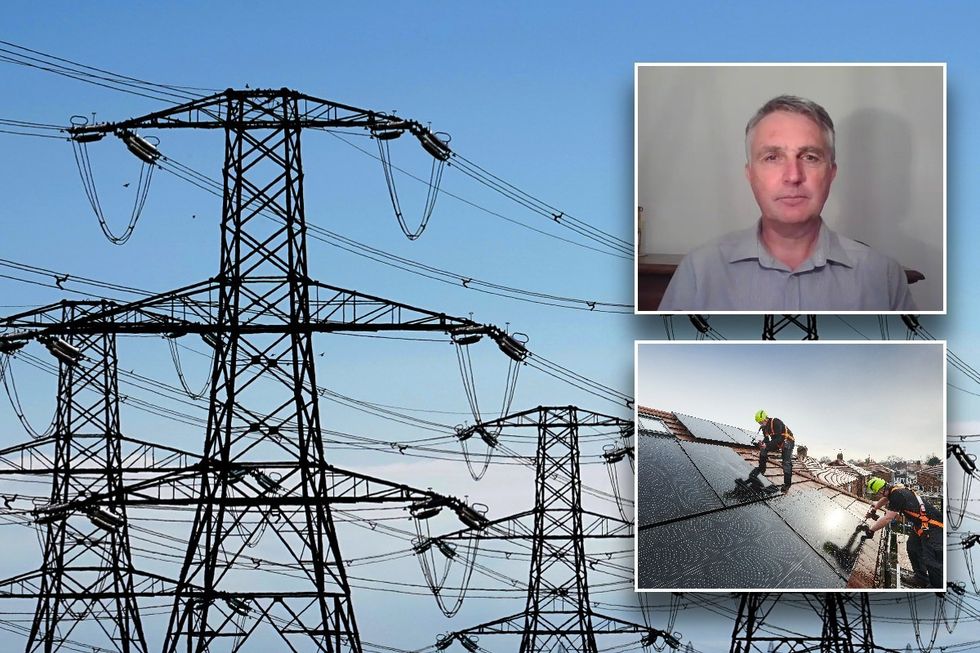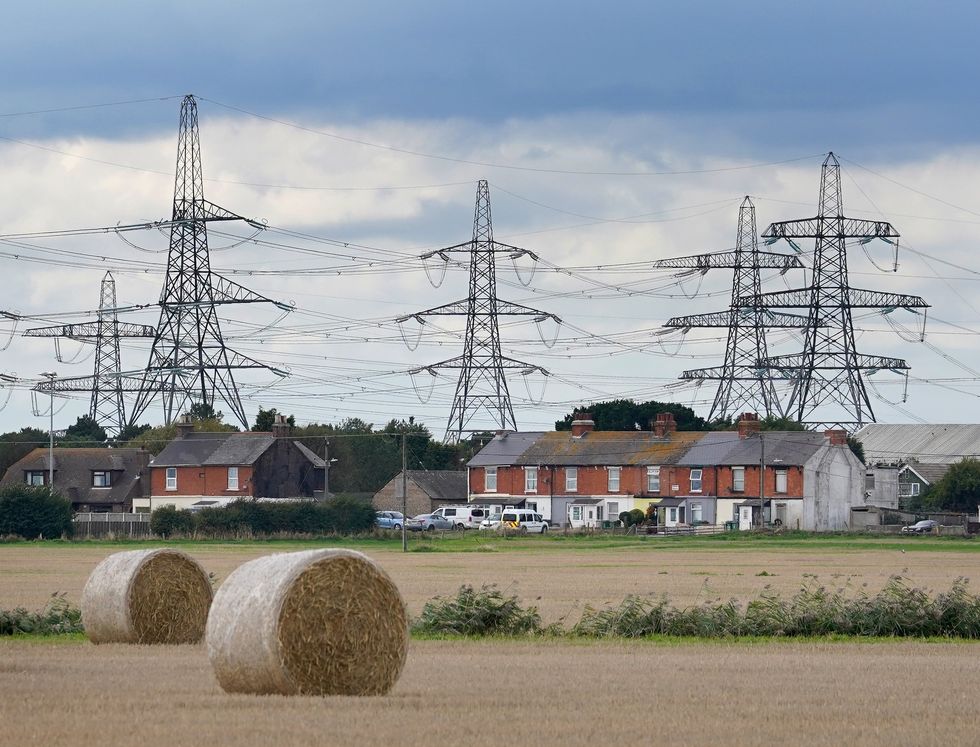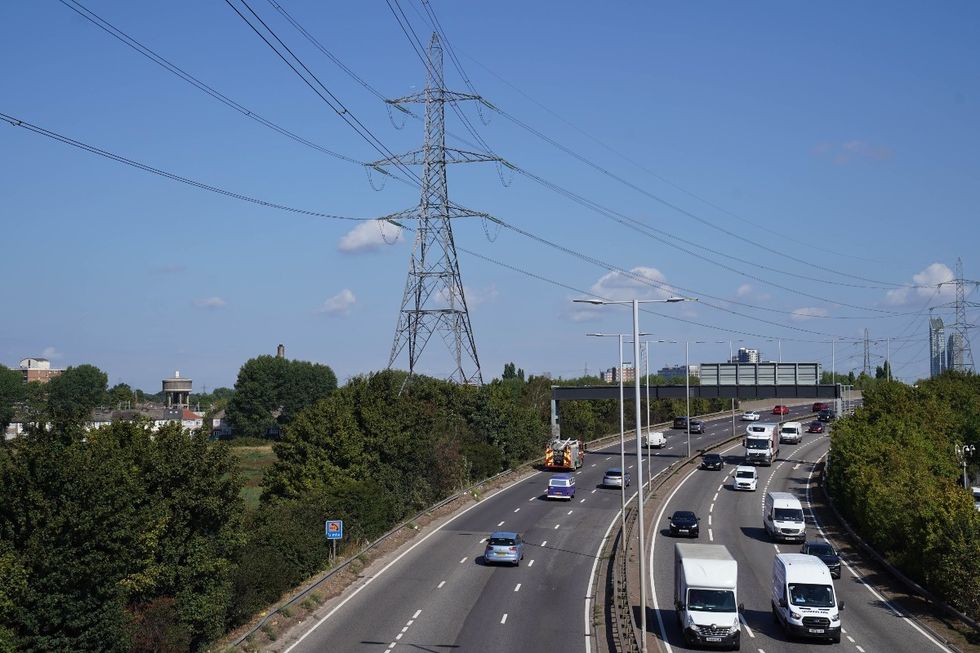Britain could be facing an epidemic of pylons in the coming years as a new report has suggested that the UK will need to double the amount of electricity-carrying steel towers to the tune of close to a trillion pounds.
The National Infrastructure Commission (NIC) has estimated that both public and private sector infrastructure investment will need to increase by up to 50 per cent over the next decade – including the need to double the number of pylons – to meet the Government’s electrification target.
According to the report, the costs associated with transforming the UK’s infrastructure will be “borne by taxpayers” but will help lower costs for households in the longer term.
The report comes just months after Rishi Sunak watered down the Government’s climate commitments and pushed back the deadline for the selling of new petrol and diesel cars and the phasing out of gas boilers.

However, the Prime Minister said he was “absolutely unequivocal” about reaching net zero carbon emissions by 2050 but said a more “realistic approach” was needed.
Speaking to GB News about the latest report, Mike Foster, CEO of the Energy and Utilities Alliance (EUA), said the energy sector “has not had direction from Government on how we actually get to something like net zero”.
He added: “The biggest uncertainty is around the future of the Gas Networks and what role they will have to play in the future because there's an enormous amount of energy that is delivered through our gas networks – not just to homes but to industry and businesses, leisure centres, hospitals, schools – all in a huge quantity of gas shifted.
“There's also a lot of energy delivered from petrol forecourts and stations. And if we're going to move away from petrol and diesel, and if we were to move away from gas, we are literally putting all our energy eggs in one basket, that of electricity.
“And with that comes complications of the sheer ability to deliver the amount of electricity we need when we want it because unlike petrol, oil, diesel and gas, it's difficult and expensive to store.”
LATEST DEVELOPMENTS:- 'Disgusting!' Millom residents speak out as migrants shipped in: 'Not enough for people already here!'
- Researchers finally learn the horrifying truth behind long Covid's main symptom
- Argentina must pay millions to bring appeal after losing hedge funds’ London lawsuit

According to the NIC, the UK will need a “reliable electricity system running mostly on renewable power” by 2035.
It further acknowledges that “more demand for electricity means more transmission and distribution cables are required”.
Speaking on the cost of such infrastructure investment, including the need to double the number of pylons in the UK to meet electrification targets, Foster said the price could rocket into the trillions.
“The bill, you know, we're talking not just 10s of billions, it's hundreds of billions getting on to a trillion.
“Now all of that has got to be done in theory by 2050 to hit our our international obligations.
“So the scale is just so huge that looking at it on on a sort of pylon by pylon basis, you go, ‘oh wait, it's only £1million for a pylon. Oh, that's not too bad’.
“But when you then scale up everything else that has to be done upstream and downstream of that pylon, it's suddenly this massive number that will frighten the life out of people.”

A spokesperson of the Energy Networks Association (ENA), which represents the UK’s energy network operators said: “The role of our energy networks is changing and upgrading our grid is vital if we are to support greater electrification, the use of more low carbon technologies and increase energy security.
“We need to maximise the use of existing power infrastructure, operate infrastructure flexibly and innovatively and build new infrastructure.”
They added that around 60 per cent of Britain’s 500,000 miles of power network is currently underground but that the cost of placing cables underground can be five to ten times as much as going overhead.
from GB News https://ift.tt/kJuxiWV
Britain could be facing an epidemic of pylons in the coming years as a new report has suggested that the UK will need to double the amount of electricity-carrying steel towers to the tune of close to a trillion pounds.
The National Infrastructure Commission (NIC) has estimated that both public and private sector infrastructure investment will need to increase by up to 50 per cent over the next decade – including the need to double the number of pylons – to meet the Government’s electrification target.
According to the report, the costs associated with transforming the UK’s infrastructure will be “borne by taxpayers” but will help lower costs for households in the longer term.
The report comes just months after Rishi Sunak watered down the Government’s climate commitments and pushed back the deadline for the selling of new petrol and diesel cars and the phasing out of gas boilers.

However, the Prime Minister said he was “absolutely unequivocal” about reaching net zero carbon emissions by 2050 but said a more “realistic approach” was needed.
Speaking to GB News about the latest report, Mike Foster, CEO of the Energy and Utilities Alliance (EUA), said the energy sector “has not had direction from Government on how we actually get to something like net zero”.
He added: “The biggest uncertainty is around the future of the Gas Networks and what role they will have to play in the future because there's an enormous amount of energy that is delivered through our gas networks – not just to homes but to industry and businesses, leisure centres, hospitals, schools – all in a huge quantity of gas shifted.
“There's also a lot of energy delivered from petrol forecourts and stations. And if we're going to move away from petrol and diesel, and if we were to move away from gas, we are literally putting all our energy eggs in one basket, that of electricity.
“And with that comes complications of the sheer ability to deliver the amount of electricity we need when we want it because unlike petrol, oil, diesel and gas, it's difficult and expensive to store.”
LATEST DEVELOPMENTS:- 'Disgusting!' Millom residents speak out as migrants shipped in: 'Not enough for people already here!'
- Researchers finally learn the horrifying truth behind long Covid's main symptom
- Argentina must pay millions to bring appeal after losing hedge funds’ London lawsuit

According to the NIC, the UK will need a “reliable electricity system running mostly on renewable power” by 2035.
It further acknowledges that “more demand for electricity means more transmission and distribution cables are required”.
Speaking on the cost of such infrastructure investment, including the need to double the number of pylons in the UK to meet electrification targets, Foster said the price could rocket into the trillions.
“The bill, you know, we're talking not just 10s of billions, it's hundreds of billions getting on to a trillion.
“Now all of that has got to be done in theory by 2050 to hit our our international obligations.
“So the scale is just so huge that looking at it on on a sort of pylon by pylon basis, you go, ‘oh wait, it's only £1million for a pylon. Oh, that's not too bad’.
“But when you then scale up everything else that has to be done upstream and downstream of that pylon, it's suddenly this massive number that will frighten the life out of people.”

A spokesperson of the Energy Networks Association (ENA), which represents the UK’s energy network operators said: “The role of our energy networks is changing and upgrading our grid is vital if we are to support greater electrification, the use of more low carbon technologies and increase energy security.
“We need to maximise the use of existing power infrastructure, operate infrastructure flexibly and innovatively and build new infrastructure.”
They added that around 60 per cent of Britain’s 500,000 miles of power network is currently underground but that the cost of placing cables underground can be five to ten times as much as going overhead.



0 Comments
Don't share any link